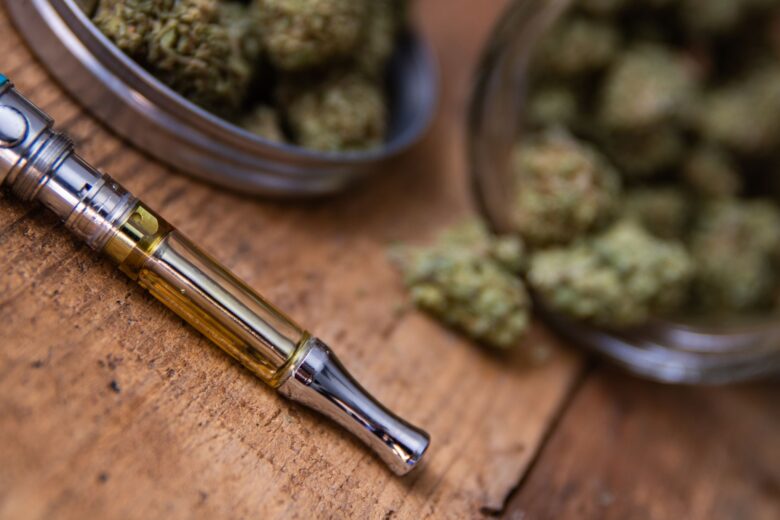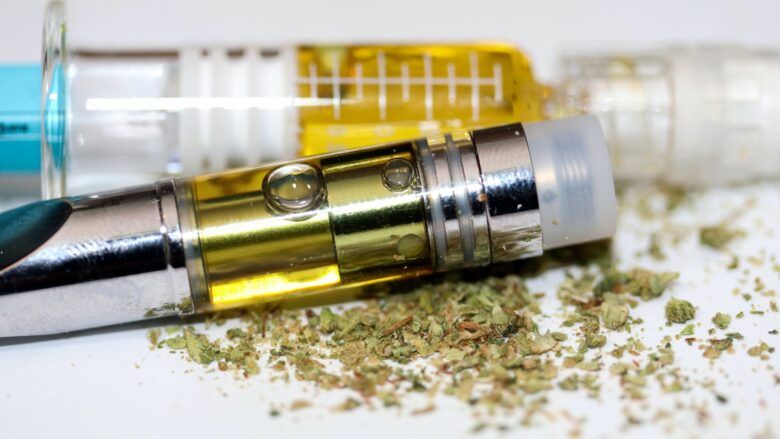In recent years, vaping cannabis has gained substantial momentum, captivating both seasoned cannabis enthusiasts and newcomers alike with its purported benefits over traditional smoking methods.
The cannabis landscape has burgeoned into a sophisticated industry, with vaping being at the forefront, promising a cleaner, more controlled, and discreet way to consume cannabis. As we delve deeper, it becomes imperative to navigate the intricacies, benefits, and potential drawbacks that accompany this burgeoning trend.
Contents
The Rise of Vaping

In the early 2010s, vaping began to carve out a significant niche in the cannabis consumption landscape. Initially embraced as a healthier alternative to smoking, it quickly gained traction due to its discretion and the ability to offer a purer cannabis flavor profile.
This method leverages vaporization technology to heat cannabis products to a temperature that releases cannabinoids and terpenes without reaching the combustion point that produces harmful toxins and carcinogens.
How Does Vaping Work?
The underlying principle of vaping is relatively simple. A vaporizer heats the cannabis material, whether it be dry herb, oil, or wax, to a temperature that converts active ingredients, like THC and CBD, into vapor. This vapor is then inhaled through a mouthpiece.
There are primarily two types of vaporizers – conduction and convection. Conduction vaporizers heat the material through direct contact with a heated surface, while convection vaporizers heat the air around the material, allowing for a more even heat distribution.
Hybrid vaporizers, which combine both conduction and convection heating methods, are also popular for offering a balanced vaping experience.
Pros of Vaping Cannabis
As vaping cannabis continues to solidify its foothold, several benefits have come to light, including:
- Healthier Alternative: Vaping is perceived as a healthier alternative to smoking since it does not involve combustion, reducing the intake of harmful byproducts like tar and carcinogens.
- Dosage Control: Vaping allows users to have better control over the dosage, a vital feature for medical cannabis patients and recreational users looking for a consistent experience.
- Discreet Usage: Vaping devices are known for their sleek designs and odorless vapor, making cannabis consumption much more discreet than traditional smoking methods.
- Rich Flavor Profile: Vaporizing preserves the terpenes and flavonoids, offering a richer, unburnt flavor, enabling connoisseurs to enjoy the nuanced flavors of different cannabis strains.
Cons of Vaping Cannabis
Despite its burgeoning popularity, vaping cannabis does pose potential downsides that users should be cognizant of:
- Health Concerns: In recent years, there have been reports of vaping-associated lung injuries, casting a shadow on vaping’s health claims. Users should ensure they are purchasing products from reputable sources to mitigate risks.
- High Initial Costs: Quality vaporizers can be costly, presenting a barrier to entry for many potential users. Although it can be economical in the long run, the initial investment is considerable.
- Maintenance: Vaporizers require regular maintenance to function optimally, including cleaning and replacing parts, which might deter users looking for a low-maintenance option.
Legal and Regulatory Landscape
As the legal framework around cannabis continues to evolve, it has a direct impact on the vaping industry. Several states in the USA and countries worldwide are legalizing cannabis for medical and recreational uses, albeit with varying restrictions.
Consumers are urged to familiarize themselves with the legal landscape in their respective jurisdictions to ensure compliant usage.
Furthermore, regulatory bodies are working tirelessly to ensure that vaping products meet stringent safety and quality standards, safeguarding public health. Recent moves towards stricter regulations underscore the importance of transparency and compliance in the burgeoning vaping industry.
Cultivating a Responsible Vaping Culture

Source: centerforliving.org
As the cannabis industry continues to mature, cultivating a responsible vaping culture is of utmost importance. Education plays a pivotal role in this endeavor, with consumers encouraged to understand the nuances of vaping cannabis, from selecting quality products to understanding the right dosage.
Moreover, users are urged to advocate for and support ethical practices in the cannabis industry, fostering a community grounded in safety, transparency, and responsible consumption. Awareness and education will be the cornerstones in ensuring that the vaping cannabis culture thrives responsibly and sustainably.
Looking Ahead
As we peer into the future, the vaping cannabis industry stands at a critical juncture, balancing innovation with responsibility.
The development of technology-driven vaporizers offering features like smartphone compatibility, customizable temperature settings, and even AI integration paints a promising picture for the industry’s future.
Simultaneously, the industry is working tirelessly to assuage health concerns through rigorous research and the development of safer, more efficient vaporizing technologies. The focus remains on offering consumers a safer alternative to smoking, without compromising on the rich experiences that cannabis has to offer.
Conclusion
Vaping cannabis is more than a fleeting trend; it is an evolving narrative in the cannabis consumption landscape, offering a harmonious blend of innovation, safety, and pleasure. As we continue to explore this dynamic space, it remains essential to navigate it with a spirit of curiosity, responsibility, and above all, an informed perspective.
Whether you are a novice venturing into the vibrant world of vaping cannabis or a seasoned connoisseur seeking to refine your experience, understanding the intricacies of vaping is crucial.
As the cloud of uncertainty slowly lifts, the vaping cannabis industry stands poised to offer a richer, safer, and more enjoyable cannabis consumption experience, guided by innovation and a commitment to excellence.
